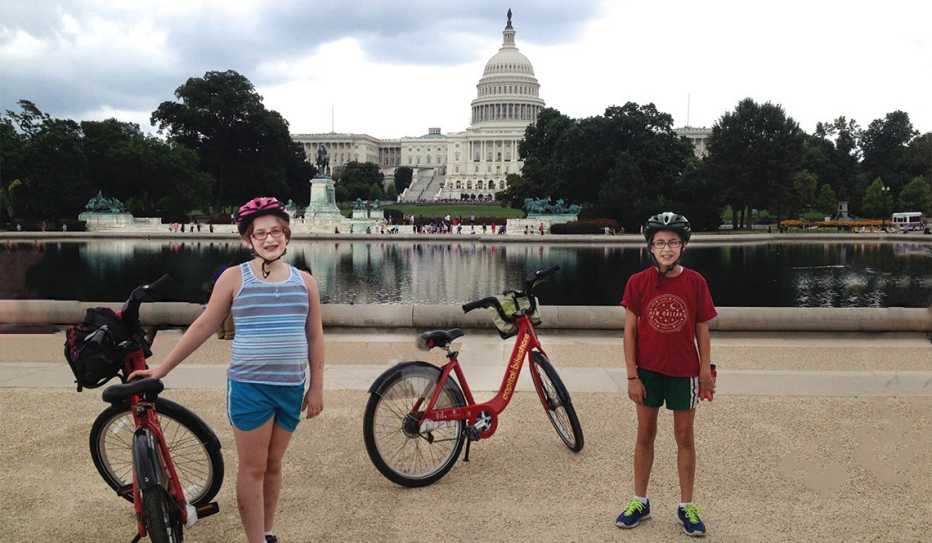AARP Hearing Center


Denver, Colorado, gets credit for launching the first bike-share program in a U.S. city, which it did in April 2010 with B-cycle.
The Minneapolis-St. Paul Nice Ride program launched in June 2010 and considers itself to be America’s first large-scale bike-share system. As of 2018, Nice Ride features 1,850 green bikes, which were rented 460,000 times in 2017.
Citi Bike — launched in 2013 to great skepticism — is now the nation’s largest with 12,000 bikes available at 700 stations throughout Manhattan and parts of Brooklyn and Queens. In 2017 alone, the bright blue bikes were used for 14 million trips, a stat that has silenced Citi Bikes' once-vocal critics.
At the start of 2018, there were about 120 bike share systems up and running across the U.S., with 28 million rides logged on the 55 largest systems in 2017.
After New York, Chicago, Washington, D.C., Miami and Boston are the largest bike-share systems. But bike-shares are found in smaller towns too. Nice Ride, for instance, helps run a system in Rochester, Minnesota (200 bikes).
With roots going back to idealistic "free bike" programs in 1960s Amsterdam, the first modern urban bike-share system was launched in Rennes, France in 1998.
In 2005, the idea was picked up in Lyon, where 3,000 bikes now ply the streets. Paris adopted the idea two years later and now features almost 20,000 bikes, which are rented more than 100,000 times a day. Bike-sharing helped ignite interest in bicycling throughout France, which until then had lagged behind the Netherlands, Germany and Scandinavian countries in two-wheel transportation.
The idea has quickly spread around the world with more than 1,000 systems operating from Quito, Ecuador, to Abu Dhabi in the United Arab Emirates to Seoul, South Korea. Bikeshare landed on North American shores in 2009 in Montreal, where 3 million people now ride bike-shares each year. China is the undisputed global leader with as many as 50 million rides a day.
Even More Sharing
"Dockless bike-shares"— where a bike can be almost parked anywhere and rented with a smartphone app — are the next big thing. Bike-sharing will no longer be limited to certain parts of town where stations are located.
"They're simple to use," explains Bill Dossett, the executive director of Nice Ride Minnesota, and a former president of the North American Bike Share Association. (Use a smartphone to take a photo of the QR code on the bike and receive a combination for the lock.) A phone- rather than station-based system has been common in German cities for a decade. After Beijing adopted a dockless system in April 2016, the percentage of all bike trips on city streets doubled from 5.5 percent to 11.6 percent in a year.
More than 70 companies have jumped into the business of supplying dockless bikes to cities, drawing more than $3 billion in private investment over the last year, Dossett reports.
Seattle, D.C., Dallas and San Francisco are among the U.S. cities experimenting with dockless bike-sharing and trying to figure out how best to manage bicycles being left in the middle of streets or sidewalks or other unhelpful locations. It's also too easy for an inconsiderately abandoned dockless bicycle to become an unbreachable obstacle to people who use wheelchairs or have other mobility limitations.
The problem of bikes left-behind has the potential to become a big, or even huge, problem. "Vast piles of impounded, abandoned, and broken bicycles have become a familiar sight in many big cities," in China, reports The Atlantic with stunning, photographic proof.
Jay Walljasper is a Minnesota-based writer, consultant and speaker about how to create stronger, happier communities for everyone.
Article published May 2018



























































